Group project¶
Research and Bioplastic Production¶
Task 1 Natural Materials¶
Research¶
As a group we were asked to search for natural alternative materials instead of the materials that they are using here in fablab, for example an alternative for 3D printing filaments, an alternative for acrylics, an alternative for wax and an alternative for MDF wood. So what we did as a group is split the work for each one of us.
I was asked to search for a natural material that can be replaced with the current materials that fablab has been using for 3D printing which is PLA (Polyactic Acid) filaments.
Searching for a natural alternative is hard because of the limitation in articles but I was able to find an excellent alternative which is wood-based ink creating a wood like structure and it prints in honeycomb structure.
Another alternative also consisted wood which is converting woodpulp into nanocellulose gel to 3D print.
Task 2 Bioplastic Production¶
Research¶
I have did my research regarding bio plastic production and bioproducts in general, to create molds, plastics and so on. I was able to find a recipe that consisted of water, glycerol, cornstarch and white vinegar. After searching deeply I was able to find the right amount of ingredients to mix and some other recipes.. So here is some brief of the informations I have found online.
Research 1¶
Bioplastics are usually derived from sources such as corn, sugar cane, beet, soya beans, cellulose or vegetable oil or plants. There are so many methods and materials to follow to make bioplastic. for example banana peels, coffee, potato starch and many other food products.
Research 2¶
PLA (polyactic acid)is typically made from the sugars in corn starch, cassava or sugarcane. It is biodegradable, carbon-neutral and edible. To transform corn into plastic, corn kernels are immersed in sulfur dioxide and hot water, where its components break down into starch, protein, and fiber. The kernels are then ground and the corn oil is separated from the starch. The starch is comprised of long chains of carbon molecules, similar to the carbon chains in plastic from fossil fuels. Some citric acids are mixed in to form a long-chain polymer (a large molecule consisting of repeating smaller units) that is the building block for plastic.
PHA (polyhydroxyalkanoate) is made by microorganisms, sometimes genetically engineered, that produce plastic from organic materials. The microbes are deprived of nutrients like nitrogen, oxygen and phosphorus, but given high levels of carbon. They produce PHA as carbon reserves, which they store in granules until they have more of the other nutrients they need to grow and reproduce. Agro and food wastes can also be used for PHA production, eg, rice husk, wheat bran, mango peel, potato peel, bagasse, and straw.
Task 3 The fun part!¶
The experiment part, the part you’re all waiting for!!
After getting the right amount of ingredients and finding the materials here in fablab, we were able to produce bioplastic.
Now lets dig in and show you what we produced. Lets start with the recipes:
Recipe 1 - Cornstarch¶
| Ingredients | Amount |
|---|---|
| Water (ml) | 80 |
| Glycerin (g) | 10 |
| Corn starch (g) | 1.6 |
| Vinegar (ml) | 15 |
The steps
- Mixing the right amount of ingredients together in a pot.
- Heating up the pot on medium heat and mixing the mixture for 10 mins.
- Once the mixture texture is viscous, pour the mixture on a flat surface to dry for 24 hrs.
(Food coloring is an option)
Here’s how we did it:

The ingredients.

Liquid mixture.

Viscous texture.
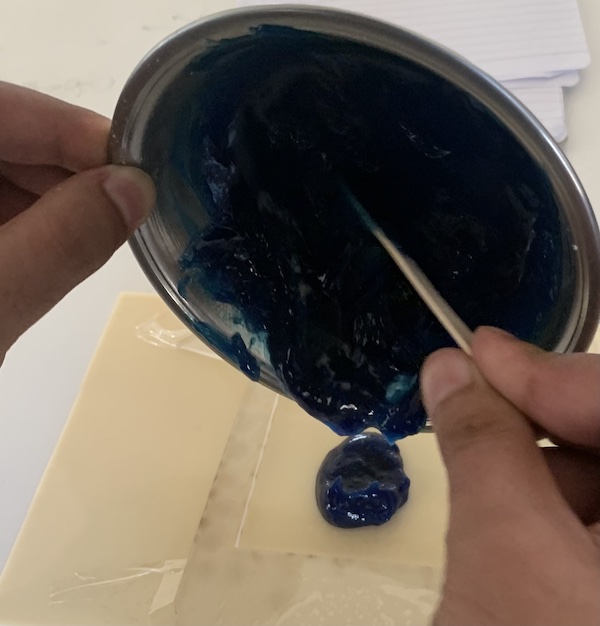
Pouring the mixture on a surface.

Flattening it and letting it dry for 24 hrs.
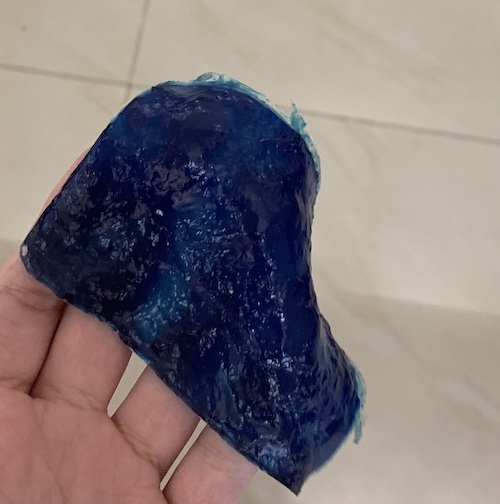
The final result after 24 hrs, resulting a flexible bioplastic.
Recipe 2 - Agar Agar¶
| Ingredients | Amount |
|---|---|
| Water (ml) | 40 |
| Glycerin (g) | 2.7 |
| Agar (g) | 1.6 |
The steps
The steps are similar to the last recipe.
- Mix the ingredients together in a pot.
- Heat them in medium heat until they dissolve and form a viscus texture.
- Pour the mixture in a mold.
- Leave to dry for 24hrs.
Here’s how we did it:
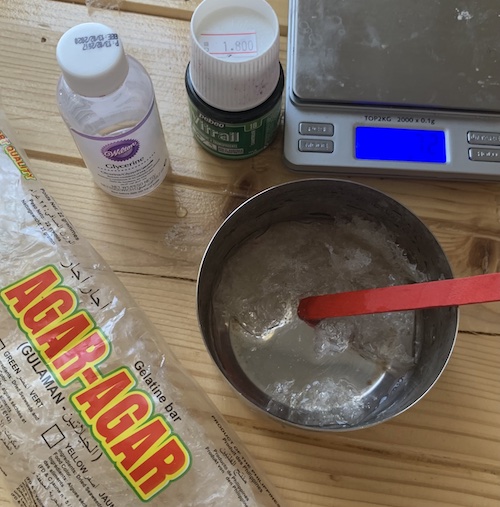
The ingredients.
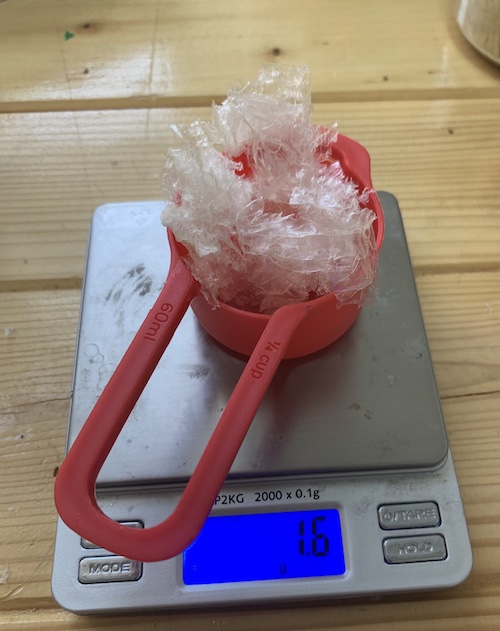
Crushing and measuring the agar agar.

Mixing the ingredients together.

Heating them up.

Letting it dry for 24hrs in a mold.
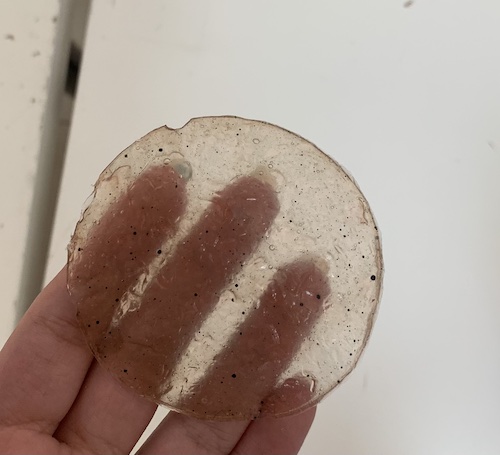
The result.
Recipe 3 - Reusable moulding material¶
| Ingredients | Amount |
|---|---|
| Water (ml) | 20 |
| Gelatine (g) | 4 |
| Glycerine (g) | 24 |
The steps
- First mix the water with gelatine until it dissolves.
- Let the mixture set.
- Pour the glycerine to the mixture and mix them all together.
- Heat it up.
- Pour into a mould and let it dry for 24hrs.
Here’s how we did it:
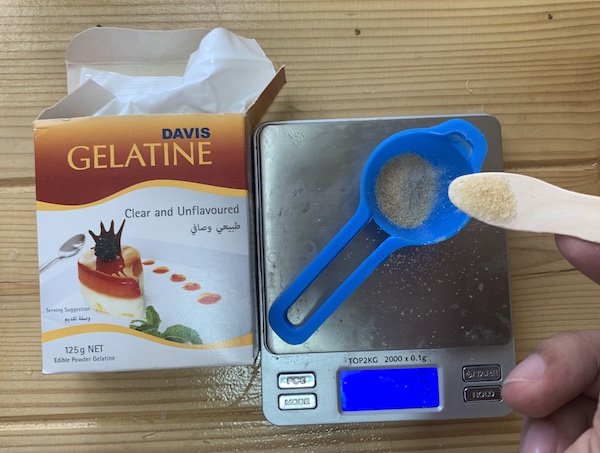
Measuring gelatine.

Mixing the gelatine with water and leaving it to set.

Measuring the glycerine.
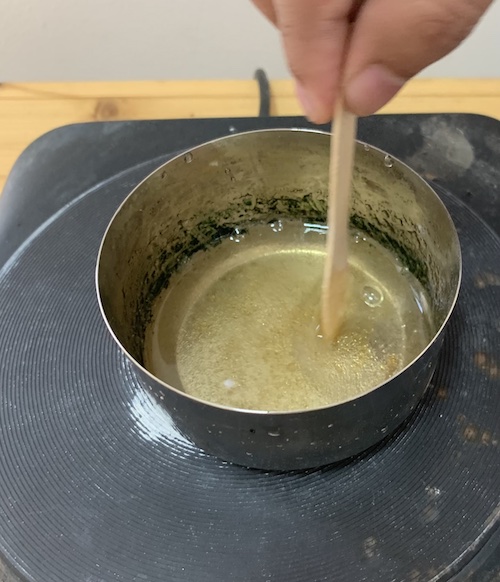
Mixing them together and heating them up.

Pouring it into a shape for moulding.
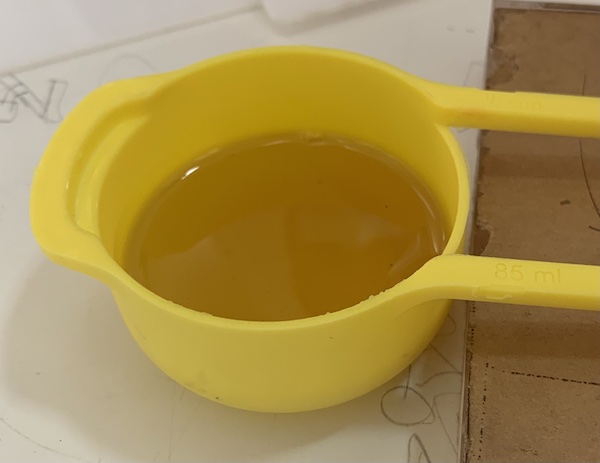
Leaving it to dry for 24hrs.
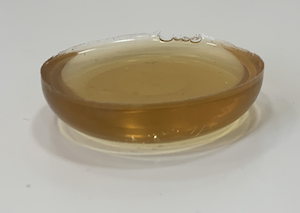

The final result.
The texture is perfect for moulding, it is a bit hard and jelly-ish.
We have decided to use it to make a lego mold.
Here’s how it went:
Lego Moulding¶
Using recipe 3.
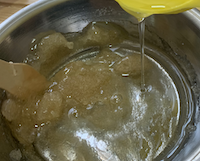
mixing the mixture of recipe 3.
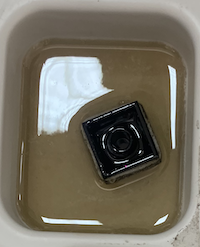
After pouring it into a shape with the lego, it is floating in the mixture due to light weight of the lego.
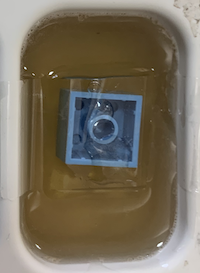
Fixing it with tape on top.
After 2 days:

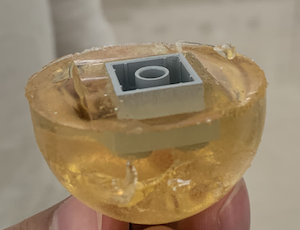
A perfect mould.
After removing the legos.

Showing the details it captured.

We decided to pour soap into the mould.

Melting the soap.
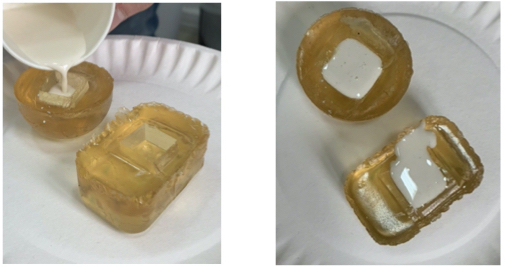
Pouring the soap into the moulds and leaving it to dry for 10 mins.
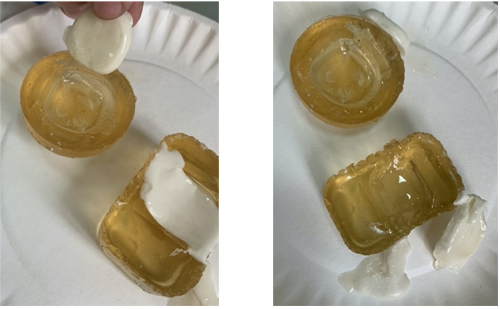
The result after drying, the mould melted due to high temperature of soap.
Another experiment we did is use sunflower oil instead of glycerine.
It was a total fail.

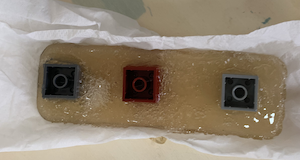
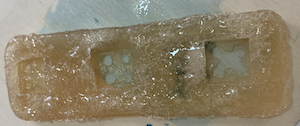
So, replacing glycerine with oil was not a great idea .. it was full of oil and the moulds didn’t turn out nice, it’s messy.
Casting¶
Reusing the first mould
We have decided to melt the first mould and reuse it.

Cut it half and melt it.

Pour it into a mould.
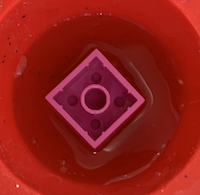
Wait for it to dry.

Next day result.
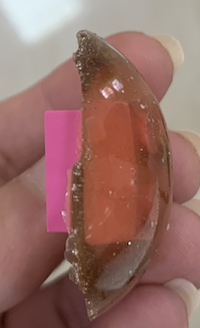
Capturing the details.
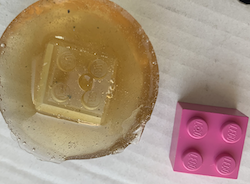
Using recipe 3 we were able to create moulds and cast it with resin.
Here we calculated the volume of the lego to mix the exact quantity of resin needed.
Resin - 5g Hardner - 3g

Left it to dry for 24hrs.
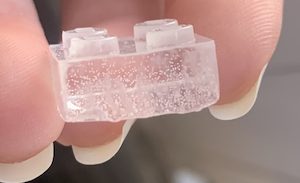
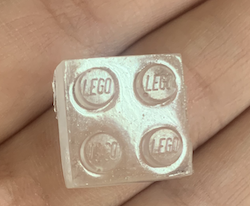 The details of the lego.
The details of the lego.
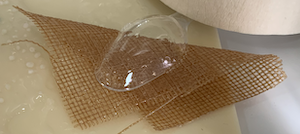
Recipe 4 - Agar Agar¶
| Ingredients | Amount |
|---|---|
| Water (ml) | 40 |
| Soap (ml) | 6 |
| Glycerine (g) | 0 |
| Oil (drops) | 2-3 |
| Agar (g) | 1.6 |
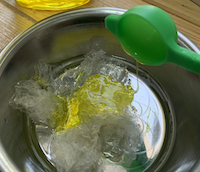
Measuring ingredients.

Mixing and heating.
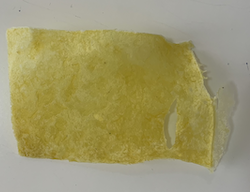
The final bioplastic result.
Recipe 5 - Bioplastic + Wax¶
Here we have referred to our previous recipes and mixed them with wax to produce machinable wax.
Recipe will be available in pictures.

As shown in the picture above, the experiments did not turn out the way we expected, the wax did not dissolve in the plastic mixture and it dried as a layer on top.

Refer to Hussain’s page for more details on the group project.
Final Findings¶
Bioplastic¶
Reusable Mold¶
Mold making is easy to use, safe and re-usable. A heat and pour molding material.
Our aim was to come up with a component which has characteristics of a silicon (in terms if binding abilities and flexibility) and bio-friendly in nature.
After researching and experimenting several recipes, we found that the basic and most important ingredients to come up with a mold is water, glycerine and gelatin.
We performed several experiments by altering the amounts of ingredients in each sample prepared, we tested our product by molding it into some shapes and casted them with resin.
The recipe that we found best for molding and casting is Recipe 7 where we used 10ml of Glycerine, 15ml Water and 5g of Gelatin.
Why Recipe seven?
Recipe eight has the texture we are looking for, can hold details of an object in molding and casting. Its disadvantage is that the melting point is very low so we have to be careful with casting temperature. melting point is around 54°.
Here are some pictures of the final outcome.
Recommendations: The more you play with the amount of ingredients the more it gets either flexible or fragile as per your requirement.
Biocomposites¶
Biocomposite is a material composed of two or more distinct constituent materials (one being naturally derived) which are combined to yield a new material with improved performance over individual constituent materials.